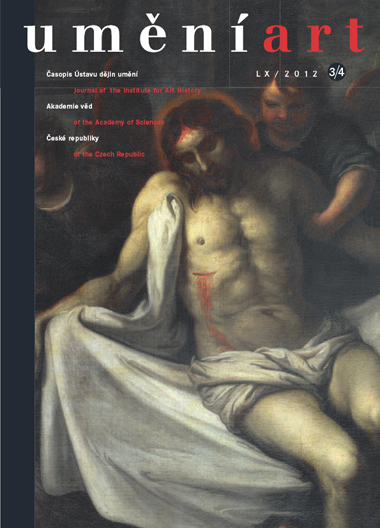Josef Vojvodík
Vide de corps - tombeau vide. Die Kraft des Abwesenden: Das Kenotaph für Max Dvořák und die Dialektik des Visuellen von Georges Didi-Huberman
In 1921 Adolf Loos created a model for a mausoleum for Max Dvořák, which was conceived as a cenotaph approximately six metres in height and was to be located in the Zentralfriedhof (central cemetery) in Vienna. The shape of the mausoleum's stepped roof would have looked like a pyramid and the interior walls were going to be decorated with frescoes by Oskar Kokoschka. The project never came about, however, and only the model for it exists (Albertina Wien, Adolf Loos Archiv). In 1974, to mark the centenary of Max Dvořák's birth, a special edition of the journal Österreichische Zeitschrift für Kunst und Denkmalpflege was published, and it contained a lecture by Dvořák's former assistant Karl M. Swoboda commemorating the thirtieth anniversary of the death of Max Dvořák. In it Swoboda describes the atmosphere following Dvořák's sudden death as 'an infinite sadness'. What does this loss, this 'infinite sadness' that remained so vivid and so strong in the mind and memory of his student and assistant for several decades mean? This study tries to answer that question, partly in relation to Loos's cubic cenotaph, but mainly in reference to Georges Didi-Huberman's reflections in art theory. In his book Ce que nous voyons, ce qui nous regarde (1992), Didi-Huberman wrote about the objects of American minimalists, noting that minimalist cubes and other strictly geometric objects made out of modern materials are evocative of Egyptian sacred structures and are where the modern and the archaic come together, and Loos's cenotaph evoked this too. According to Didi-Huberman, these elementary geometric objects have anthropomorphic, human features, and for that reason we find them disturbing to look at; they possess a kind of 'humanity' but in 'a state of absence'. Viewed from this perspective, the model cenotaph for Max Dvořák represents an archi-tectonic and auratic figure or, more accurately, the embodiment of loss and the absence of the other.
Full-text in the Digital Library of the Czech Academy of Sciences:
https://kramerius.lib.cas.cz/uuid/uuid:c5ddb0b1-5f37-aff7-4e73-a49fc8b070e3
< back

